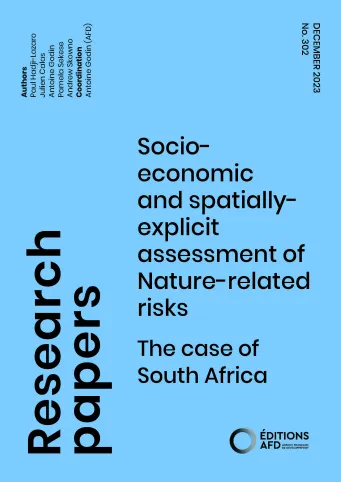Share the page
Socioeconomic and spatially-explicit assessment of Nature-related risks: the case of South Africa
Published on

This study introduces new methods for evaluating nature-related socioeconomic risks in the South African context, anchored on two main contributions. Firstly, it embarks on a multidimensional analysis of the exposure of several macro-financial and social variables to nature-related risks. Based on Environmentally Extended Input-Output tables and socioeconomic satellite accounts, the analysis identifies how physical and transition risks could exert significant impacts on directly and indirectly sectors essential for domestic and international supply chains but also for employment and fiscal revenues. Secondly, the research extends to a more granular spatially-explicit assessment, at the municipality level, of socioeconomic vulnerabilities related to water scarcity and the protection of terrestrial ecosystems. Results localize socioeconomic exposures through key sectors, especially in Mpumalanga. These two intertwined facets underline the importance of a holistic approach to nature-related risks, combining economists and ecologists' knowledge, and able to emphasize the intertwined goals of economic prosperity, social stability, and environmental sustainability.
Useful Information
-
Authors
-
Coordinators
-
Edition
-
302
-
Number of pages
-
60
-
ISSN
-
2492 - 2846
-
Collection
-
Research Papers
